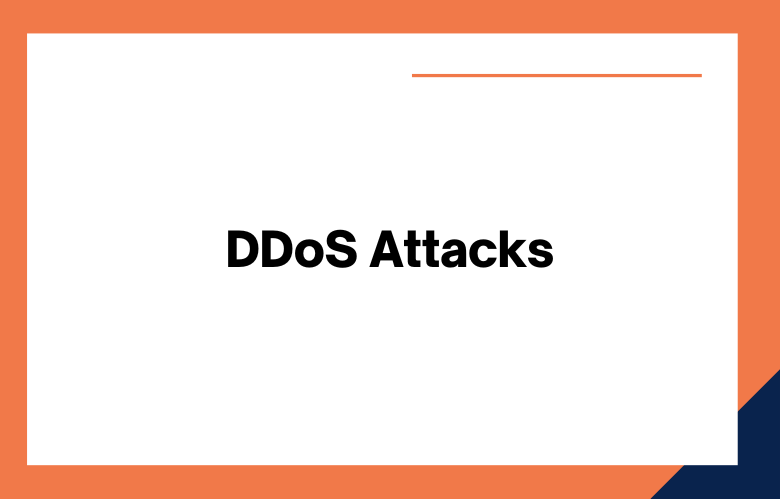Digital technology is integral to political campaigns, such as social media, email, text messaging, and online advertising. However, political campaigns make natural targets for cybercriminals for different reasons.
The stakes involved in political elections make it inevitable for political campaigns to come under various cyber-attacks, including Distributed Denial of Service (DDoS) attacks. Over the years, we have seen political campaigns taken down by DDoS attacks.
The magnitude of damage from a DDoS attack can be significant, from website downtime to losing sensitive data. However, campaigns can protect themselves if they are adequately prepared. It will highlight how political campaigns can prepare for and mitigate DDoS attacks.
What is a DDoS Attack, And why are Political Campaigns Targeted?
DDoS attacks, or Distributed Denial of Service attacks, attempt to take down a website or server by overwhelming it with traffic, often from multiple sources.
Political campaigns can be prime targets for DDoS attacks because they rely heavily on digital communication to reach their supporters, spread their message, and fundraise online.
However, with the prominence of online campaigning comes a new set of challenges, one of which is the threat of DDoS attacks.
DDoS (Distributed Denial of Service) attacks have become increasingly prevalent in the digital age, and political campaigns must prepare for and mitigate these attacks to ensure the integrity of their online operations.
How Political Campaigns Can Prepare for and Mitigate DDoS Attacks
Modern-day political campaigns have changed dramatically over the years. Social media-targeted online advertising and strategic data analysis have replaced billboards, rallies, and speeches.
However, with the prominence of online campaigning comes a new set of challenges, one of which is the threat of DDoS attacks.
DDoS (Distributed Denial of Service) attacks have become increasingly prevalent in the digital age, and political campaigns must prepare for and mitigate these attacks to ensure the integrity of their online operations.
What is The Importance of Educating Staff and Volunteers?
Political campaigns must educate staff and volunteers on the importance of cybersecurity and how to detect potential threats. Staff and volunteers may inadvertently download malware on their devices, exposing the campaign’s network to potential attackers.
Therefore, campaigns should provide cybersecurity awareness training to all staff and volunteers, emphasizing the need to detect potential threats and report suspicious activities immediately.
What Are The Immediate Steps to Take After a DDoS Attack?
The immediate aftermath of a DDoS attack can be chaotic, requiring quick response times to minimize the damage done.
The first step is to notify the hosting provider and law enforcement, as this attack is illegal. Secondly, the campaign must focus on restoring access to the website or services, potentially through an alternative server or provider.
Lastly, the campaign must analyze the effects of the attack, noting what was lost and how they can prevent another one, perhaps through implementing more DDoS protection.
How Can You Prepare for and Mitigate DDoS Attacks
The first step in any mitigation plan is detection. Keeping track of the traffic on your servers is vital to spotting unusual spikes in traffic. A project is critical to respond to a DDoS attack immediately.
A strategy can include rerouting traffic through other servers or services, activating server protections, and contacting security professionals.
Best Practices for Political Campaigns Can Prepare and Mitigate DDoS Attacks
Use DDoS Mitigation Services
Several DDoS mitigation services are available to political campaigns to mitigate and manage the effects of an attack.
These services include DoS protection, rapid response times, network-layer DDoS mitigation, and access to security analysts’ expertise.
Keep Your Website and Infrastructure Up to Date
Political campaigns that utilize outdated infrastructure put themselves in line for trouble.
Web applications and server software should be kept up to date to ensure vulnerabilities are closed and threats are mitigated.
Outdated plugins, web frameworks, and server software configurations can create predictable entry points for cyber-attacks.
Train Your Staff and Volunteers
Cybersecurity risks are becoming more sophisticated and more challenging to detect. Your staff and volunteers should be trained to recognize and report suspicious activity.
Cybersecurity training should integrate critical infrastructure defense mechanisms like network segmentation and solid passwords and develop situational awareness and phish recognition techniques.
Understand the risk:
One of the primary steps campaigns must take in preparing for DDoS attacks is understanding what they are, how they work, and what damage they can cause.
A DDoS attack occurs when multiple devices attempt to access a server simultaneously, overwhelming it with traffic that makes the website or online services unavailable to genuine users.
DDoS attacks occur through botnets, networks of compromised computers, and other internet-connected devices, which cybercriminals control remotely.
Secure your systems:
Campaigns should invest in a robust IT infrastructure to safeguard themselves from DDoS attacks. Adequate security measures, such as firewalls, intrusion detection systems, and anti-virus software, will help thwart DDoS attacks.
In addition, campaigns should ensure that their website and applications do not have any vulnerabilities that can be exploited. It is crucial to partner with IT professionals to ensure your systems are secure.
Use DDoS mitigation services:
Political campaigns should consider DDoS mitigation services as a crucial part of their plan to deal with DDoS attacks. Such services involve a third-party company that offers DDoS protection to websites and other online services.
These services employ traffic filtering and rerouting techniques to keep DDoS traffic from the website’s servers. Theoretically, a DDoS mitigation service will ensure a website stays online even during a severe attack.
Develop an Incident Response Plan (IRP):
An incident response plan becomes useful when an organization faces a cyber attack. For a political campaign, an IRP can help the team manage cyber-related issues, from DDoS attacks to election hacking.
A detailed plan includes the people, processes, and technology used to detect, analyze, and respond to security incidents. It is essential to test and refine incident response procedures frequently to ensure they are effective in case of an attack.
Educate and train staff:
A political campaign’s success against DDoS attacks depends on how healthy staff can identify and prevent such attacks, making training an integral part of preventative measures.
Educate staff on recognizing and responding to phishing emails, utilizing unique and secure passwords, and promptly detecting and reporting suspicious activity.
DDoS attacks can also target individual devices like smartphones, so it’s vital to remind your staff of these issues regularly.
Conclusion:
DDoS attacks remain a threat to political campaigns, but there are measures that movements can take to mitigate this risk.
Understanding the risk, securing your systems, using DDoS mitigation services, developing an IRP, and educating and training staff can protect political campaigns from the significant impact of DDoS attacks.
A successful political campaign must protect its digital footprint using these measures to minimize online threats.
Political campaigns that need to build an effective cybersecurity posture put themselves and their constituent’s information at risk.
Therefore, it is crucial to prioritize cybersecurity and incorporate best practices to protect campaigns from DDoS and other cyberattacks.
Call: +91 9848321284
Email: [email protected]











